 W
WThe Godzilla franchise is a Japanese media franchise created and owned by Toho Co., Ltd, centered on the fictional kaiju character Godzilla. It is the longest-running film franchise, having been in ongoing production from 1954, with several hiatuses of varying lengths. The film franchise consists of 36 films; 32 produced by Toho, one produced by TriStar Pictures, and three produced by Legendary Pictures.
 W
WThe MonsterVerse is an American multimedia franchise and shared fictional universe that is centered on a series of monster films featuring Godzilla and King Kong, produced by Legendary Entertainment and co-produced and distributed by Warner Bros. Pictures. The first installment was Godzilla (2014), a reboot of the Godzilla franchise, which was followed by Kong: Skull Island (2017), a reboot of the King Kong franchise, Godzilla: King of the Monsters (2019), and Godzilla vs. Kong (2021). The franchise received generally positive reception and has been commercially successful with a combined gross of $1.950 billion worldwide.
 W
WBandai Co., Ltd. is a Japanese toy maker and a producer of many plastic model kits as well as a former video game company. Its headquarters are located in Taitō, Tokyo. From 1981 until 2001, Bandai also produced video game consoles.
 W
WBattle in Outer Space is a 1959 Japanese science fiction film directed by Ishirō Honda, with special effects by Eiji Tsuburaya.
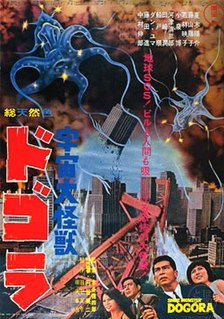 W
WDogora is a 1964 Japanese kaiju film directed by Ishirō Honda, with special effects by Eiji Tsuburaya. Produced and distributed by Toho Studios, the film stars Yosuke Natsuki, Nobuo Nakamura, Hiroshi Koizumi, and Akiko Wakabayashi, along with American actor Robert Dunham. The film tells the story of a huge jellyfish-like carbon-eating creature from space that attacks Japan.
 W
WRobert Dunham was an American actor, entrepreneur, writer, racecar driver, journalist, and a US Marine.
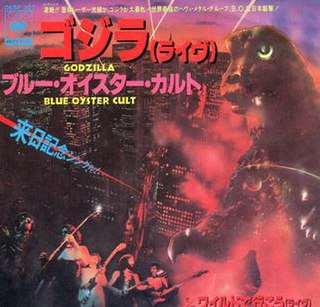 W
W"Godzilla" is a single by U.S. hard rock band Blue Öyster Cult, the first track on the band's fifth studio album Spectres. The lyrics are a tongue-in-cheek tribute to the popular movie monster of the same name. Despite failing to chart, the song received significant airplay on rock radio stations and became a sleeper hit. The song, along with "(Don't Fear) The Reaper" and "Burnin' for You," is one of the band's best-known songs and has become a staple of its live performances. It has been covered by bands such as moe., Racer X, Fu Manchu, The Smashing Pumpkins, Sebastian Bach, Double Experience and Fighting Gravity.
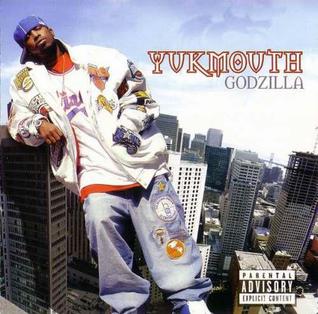 W
WGodzilla is the third solo studio album by American rapper Yukmouth. It was released on July 22, 2003 via Rap-A-Lot 4 Life. Recording sessions took place at Smoke House Studios in North Hollywood, and at Dean's List House of Hits and Noddfactor Studios in Houston. Production was handled by Nan Dogg, Dame Grease, Mike D., Mike Dean, Arch Bishop Storm, C. Notes, G-Casso, Joseph "JoJo" Hearne, Mr. Lee and Mr. Mixx, with J. Prince serving as executive producer. The album peaked at number 112 on the Billboard 200 and number 21 on the Top R&B/Hip-Hop Albums in the United States.
 W
WThe Godzilla head is a landmark and tourist attraction in Kabukichō, Shinjuku, Tokyo, Japan. The sculpture is accessible from Hotel Gracery Shinjuku's Godzilla Terrace, on the Shinjuku Toho Building. It depicts Godzilla, occasionally with "glowing eyes and smoky breath". The 80-ton head, based on Godzilla's appearance in Godzilla vs. Mothra (1992), was unveiled in 2015. Its placement on the Hotel Gracery's terrace matches Godzilla's 50 meter height seen during the Showa era films in the franchise.
 W
WGodzilla Street is a street named after Godzilla in Kabukichō, Shinjuku, Tokyo, Japan.
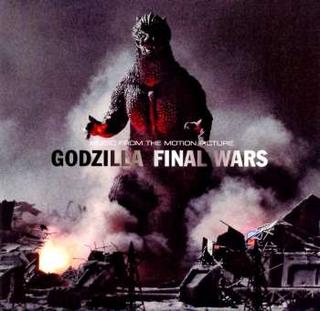 W
WGodzilla: Final Wars - Music from the Motion Picture is the film score to the 2004 film Godzilla: Final Wars composed by Keith Emerson, Nobuhiko Morino, and Daisuke Yano. The soundtrack was released on December 22, 2004 through Victor Records. In 2010, Toho Music released a 3-disc expansion of the soundtrack which included material not featured in the Victor Records release such as demos, extensions, remasters, complete compositions, and rejected tracks.
 W
WGodzilla: The Album is the soundtrack to the 1998 film Godzilla. It was released on May 19, 1998, through Epic Records and mainly consists of alternative rock songs. The soundtrack was a success, peaking at No. 2 on the Billboard 200 and reaching platinum certification. The album was commercially successful in both the United States and Japan, being certified platinum by the RIAJ and RIAA in June and July 1998, respectively.
 W
W"Godzilla!" is a song recorded by English band the Creatures, consisting of singer Siouxsie Sioux and drummer Budgie. It was produced by the duo and was the lead single from their fourth and final album, Hái!.
 W
WGodzilland , or Godzillaland, refers to a series of Japanese children's educational television series produced by Toho and based on the Godzilla franchise. The first series, a trivia show titled Adventure! Godzilland , aired on TV Tokyo in 1992. The series was intended to promote the film Godzilla vs. Mothra, and features both live-action and chibi-style animated segments. It also features musical numbers, including one that doubles as an aerobic exercise. Toho then produced a second series, Adventure! Godzilland 2 , which aired in 1993 as a promotion for Godzilla vs. Mechagodzilla II.
 W
WGojira is a French heavy metal band from Ondres. Founded as Godzilla in 1996, the band's lineup—brothers Joe and Mario Duplantier (drums), Christian Andreu, and Jean-Michel Labadie (bass)—has been the same since the band changed its name to Gojira in 2001. Gojira has been known for their progressive and technical death metal styles and their spiritual and environmentally-themed lyrics. The band has gone "from the utmost obscurity during the first half of their career to widespread global recognition in the second".
 W
WGojirasaurus is a dubious genus of coelophysoid theropod dinosaur named after the giant monster movie character Gojira.
 W
WGojiro is the 1991 debut novel by former Esquire columnist Mark Jacobson. It reinterprets the Godzilla film series from the perspective of the daikaiju—not a fictional creature depicted on-screen via suitmation, but an irradiated varanid-turned B-movie star named Gojiro. Gojiro, a freak mutation with a cynical worldview, suffers the pain of solitude as well as several maladies experienced by entertainers, including drug abuse and suicidal tendencies. The story revolves around his adventures with human friend Komodo, a scientific genius scarred as a child by the atomic bombing of Hiroshima, as they attempt to fulfill their "Triple Ring Promise" to bring about world peace. The odyssey takes them from their home on Radioactive Island—also home to several children, called Atoms, suffering from radiation sickness—to several locations in Hollywood and the Trinity site in New Mexico.
 W
WThe Gotengo , also known in the West as Atragon, is a fictional flying multipurpose warship that has appeared in several tokusatsu films of Toho Company, Ltd., beginning with Atragon in 1963. It was first conceived by author Shunrō Oshikawa in his 1899 novel Kaitei Gunkan, of which Atragon was an adaptation produced by Toho Studios. The submarine is heavily armed and armored, but its trademark tactic is to ram and sink enemy ships. In cinema, the submarine is easily identifiable by the enormous drill on its bow; it is also notable for being able to burrow underground and fly. The Gotengo also makes an appearance in the film for Toho's The War in Space and Chousei Kantai Sazer-X, Chousei Kantai Sazer-X: Fight! Warriors of the Stars. While the name of the ship is recited as "Goten-gō" in Japanese, it should be rendered as "Goten" in English; as the suffix, 号 (gō), simply denotes the object as a ship.
 W
WHibiya Godzilla Square is a square in Tokyo, Japan.
 W
WIshirō Honda was a Japanese filmmaker who directed 49 films in a career spanning 59 years. He is regarded as one of the most internationally successful Japanese film-makers of the 20th century.
 W
WJakks Pacific, Inc. is an American company that designs and markets toys and consumer products, with a range of products that feature numerous children's toy licenses. The company is named after its founder, Jack Friedman, who had previously founded LJN and THQ and presided over the company until retiring as CEO and chairman after March 31, 2010, a month before his death on 3 May, 2010.
 W
WKaiyodo is a Japanese company which manufactures figurines and garage kits. Its headquarters is in Kadoma, Osaka Prefecture. While the company mostly focuses on anime related characters, it recently has acquired other licenses, e.g. King Kong, and some Godzilla characters.
 W
WLatitude Zero is a 1969 tokusatsu science fiction film directed by Ishirō Honda, with special effects by Eiji Tsuburaya. An international co-production of Japan and the United States, it stars Joseph Cotten, Cesar Romero, Akira Takarada, Masumi Okada, Richard Jaeckel, Patricia Medina, and Akihiko Hirata.
 W
WMonster Planet of Godzilla was a theme park attraction screened at Sanrio Puroland and Harmony Land which ran from March 18, 1994 to July 1, 1998. It is a 3-D motion simulator featuring specially filmed sequences of Godzilla battling the monsters Mothra and Rodan. All the monsters were portrayed using the costumes and props from the early 1990s Godzilla films. In addition, a new super-plane named Earth is introduced to thwart the monsters' destructive rampage.
 W
WKeizō Murase is a Japanese suitmaker, stuntman, sculptor, modeler, and film director. He is particularly well known for his work in giant monster films, including Mothra (1961), King Kong vs. Godzilla (1962), and The Mighty Peking Man (1977).
 W
WHaruo Nakajima was a Japanese actor best known for playing Godzilla in 12 consecutive films, starting from the original Godzilla (1954) until Godzilla vs. Gigan (1972). He also played various other giant monsters in kaiju films, including Mothra and The War of the Gargantuas and also appeared in a minor role in the Akira Kurosawa film Seven Samurai.
 W
WSciFi Japan TV was a streaming television series of documentaries revolving around Japanese kaiju and tokusatsu movies. The show was shot on location in Japan and generally featured interviews with filmmakers and movie-related events. Every episode was released bilingually for both Japanese- and English-speaking audiences.
 W
WTokyo Marui Co. Ltd is a Japanese manufacturer of airsoft guns and toy cars located in Adachi, Tokyo, and are famous for pioneering the design of battery-powered airsoft guns. Their products are principally sold in Japan, but are also exported worldwide.
 W
W"Treehouse of Horror XXVI" is the fifth episode of the twenty-seventh season of the American animated television series The Simpsons, the 26th episode in the Treehouse of Horror series of Halloween specials, and the 579th episode of the series overall. It originally aired on the Fox network in the United States on October 25, 2015.
 W
WEiji Tsuburaya was a Japanese special effects director. Known as the "Father of Tokusatsu", he worked on 250 feature films in a career spanning 50 years. He is regarded as one of the co-creators of the Godzilla series, as well as the main creator of the Ultra series. During his rise to post-war fame in the wake of Godzilla (1954), it was widely reported that Tsuburaya was born on July 7, which is the high day of Tanabata, a sign of good fortune.
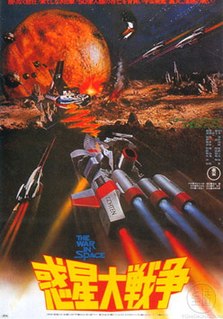 W
WThe War in Space, released in Japan as Great Planet War , is a tokusatsu science fiction film produced and released by Toho Studios in 1977.
 W
WThe War of the Gargantuas is a 1966 kaiju film directed by Ishirō Honda, with special effects by Eiji Tsuburaya. Referred by scholar Stuart Galbraith IV as a "quasi–sequel" to Frankenstein Conquers the World, the film was a Japanese-American co-production; it was the third and final collaboration between Toho Co., Ltd and Henry G. Saperstein. The film stars Russ Tamblyn, Kumi Mizuno and Kenji Sahara, with Yû Sekida as Sanda and Haruo Nakajima as Gaira. In the film, scientists investigate the sudden appearance of two giant hairy humanoid monsters that culminates in a battle in Tokyo.
 W
WAkira Watanabe was a Japanese special effects art director who worked on 38 films in a career spanning 25 years.